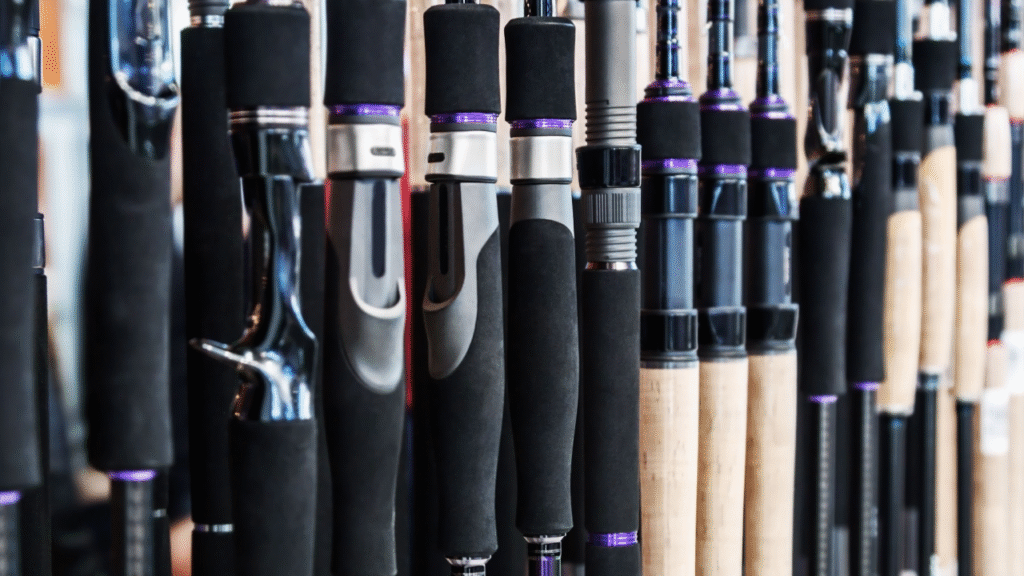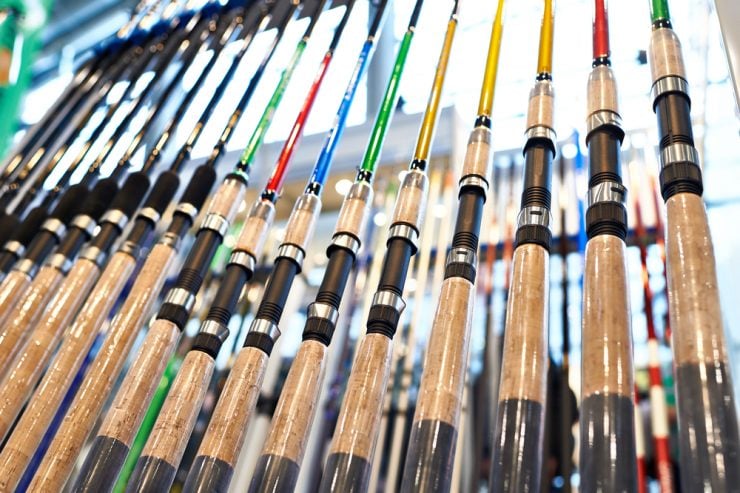Walking into a tackle shop or browsing online for a fishing rod can feel like stepping into a maze. With so many options—different lengths, materials, and technical terms like “action” and “power”—it’s easy to get overwhelmed. As someone who’s spent years fishing for everything from panfish to bass, I’ve learned that picking the right rod comes down to understanding a few key factors. To make it easier, I’ve broken down what matters when choosing a rod, drawing on my own experiences and insights from other anglers. Whether you’re new to fishing or looking to refine your setup, this guide will help you find a rod that fits your needs.

What Is Rod Action?
One of the first things you’ll notice when shopping for a rod is the term “action.” This refers to how a rod bends and how quickly it snaps back to its straight, normal shape after being bent. Imagine holding a rod and flexing the tip: the way it moves and returns to its original position is its action. The faster it springs back, the “faster” the action. The slower it returns, the “slower” the action.
Rods with fast or extra-fast actions are stiffer, bending mostly near the tip. This makes them quick to respond, which is great for techniques where you need to set the hook hard and fast, like fishing with a plastic worm or a jig. I’ve found fast-action rods especially useful when I’m working a lure with sharp rod movements, such as twitching a topwater bait or hopping a jig along the bottom. They give you control and help drive a hook through tough plastic or a fish’s mouth, even when there’s a lot of line out.
Slower actions, like moderate or slow, allow the rod to bend deeper into its middle or even lower sections. This creates a more flexible, springy feel. Moderate-action rods are my go-to for lures like crankbaits or spinnerbaits, where I’m reeling steadily and don’t want to yank the bait away from a fish. The rod loads up under pressure, letting treble hooks sink in as the fish bites, without needing a hard hookset. Slow-action rods, though less common, shine for long casts with light lures, like tiny crankbaits for panfish, because they flex more and launch the bait farther.

How Rod Power Works
While action describes how a rod bends, power is about its strength or backbone—how much force it takes to make the rod flex and how much muscle it has to handle fish or lures. Power ranges from ultralight, which is perfect for small panfish, to extra-extra-heavy, built for massive fish and huge lures like big swimbaits.
Choosing the right power depends on what you’re fishing for and how you’re fishing. For example, I use a medium-light rod when I’m tossing small jigs or drop shots for bass or walleye. It’s sensitive enough to feel light bites but strong enough to handle a decent fish. For heavier applications, like flipping jigs into thick cover for bass, I’ll grab a heavy or extra-heavy rod. These have the backbone to pull fish out of weeds and cast hefty lures without wearing me out. On the flip side, if I’m chasing panfish with tiny spinners, an ultralight rod makes casting easier and keeps the fight fun without overpowering the fish.
Pairing power with the right lure size and hook type is key. A heavy rod can set a big hook easily but struggles with light lures. A light rod casts small baits well but might not have the strength to drive a large hook. I’ve learned the hard way that using a rod that’s too light for the job can tire you out, while one that’s too heavy makes casting inefficient.

Matching Action and Power to Techniques
The magic of a great rod lies in how its action, power, and length work together for specific fishing styles. For instance, when I’m pitching a jig into heavy cover for bass, I want an extra-fast, heavy-power rod around 7.5 feet long. The stiff tip sets the hook quickly, and the strong backbone pulls fish out of thick weeds. But if I’m throwing a deep-diving crankbait, I’ll switch to a moderate-action, medium-power rod that’s 8 feet long. The softer action lets me cast farther and keeps the fish hooked without tearing the treble hooks out.
For finesse fishing, like working a small jerkbait or topwater, a fast-action, medium-heavy rod is my pick. It’s responsive enough for sharp twitches and accurate casts into tight spots. When targeting panfish with ultralight jigs, I go for a slow-action, ultralight rod. The extra flex makes casting tiny baits a breeze and adds excitement to every fight.
Materials Make a Difference
Rods aren’t just about action and power—materials play a big role in how they feel and perform. Most modern rods are made from graphite, fiberglass, or a blend of advanced materials like carbon fiber. Graphite rods, often labeled with terms like “high modulus” or “40-ton,” are lightweight and sensitive, making them great for feeling subtle bites. Fiberglass rods, sometimes called E-glass, are more flexible and durable, which is why they’re often used for crankbait rods where a slower action is ideal.
Manufacturers have gotten creative, blending materials to balance strength, weight, and action. Some high-end rods use layered carbon fiber or proprietary weaves to create unique feels. These advancements explain why two rods might look similar but differ wildly in price. I’ve noticed that pricier rods often feel lighter and more balanced, which reduces fatigue during long days on the water.

Handles and Guides Matter Too
The handle and guides on a rod might seem like small details, but they affect comfort and performance. Traditional cork handles are still popular because they’re comfortable in wet conditions and last for years. EVA foam is another common choice—it’s dense, lightweight, and durable. Some brands use innovative materials, like tacky rubber blends or carbon fiber grips, to improve feel and reduce weight. I prefer split grips for lighter rods because they cut down on weight, but full grips are better for two-handed casting with heavy lures like swimbaits.
Guides, the loops that hold your line, come in materials like stainless steel, titanium, or zirconium, often with ceramic inserts to reduce friction. High-quality rods have more guides to keep the line off the rod’s blank when it bends, making casts smoother and reducing break-offs. I always check guides for cracks or wear, as damaged inserts can fray my line and cost me a big fish. Micro guides or specialized designs, like those that funnel line on spinning rods, can also improve casting distance and control.

Spinning Rods for Beginners
If you’re just starting out, I recommend a spinning rod with a spinning reel. They’re easy to use: pinch the line, open the reel’s bail, and release the line as you cast. Spinning rods are versatile, letting you fish small baits for panfish or larger lures for bass. They’re also forgiving while you learn to work the rod and reel in slack. A medium-power, fast-action spinning rod around 7 feet is a great all-around choice for beginners.
One-Piece vs. Two-Piece Rods
When choosing a rod, you’ll also decide between one-piece and two-piece designs. One-piece rods are my preference for most situations because they’re stronger, more sensitive, and have a consistent feel. But two-piece rods are great for travel, breaking down easily to fit in a suitcase or car. I’ve used some excellent two-piece rods that perform nearly as well as one-piece models, making them a solid choice if you’re on the go.
Putting It All Together
Choosing a fishing rod doesn’t have to be intimidating. By focusing on action, power, length, and materials, you can narrow down the options to find a rod that matches your fishing style. Whether you’re casting for bass in heavy cover, chasing panfish in a pond, or working a crankbait along a riverbank, the right rod makes all the difference. If you’re curious about specific models, check out reviews or visit a local tackle shop to hold a few rods in your hands. With a little knowledge, you’ll be ready to pick a rod that feels like an extension of your arm and helps you land more fish.


Add comment